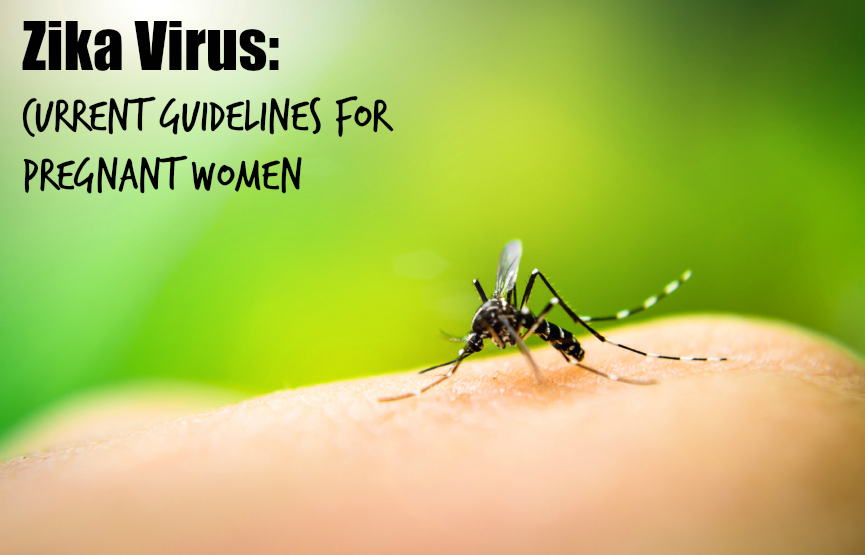Zika Virus: Current Guidelines for Pregnant Women
February 25, 2016
It seems like the panic over the Zika virus escalated from nothing to a fever pitch overnight. It has had a polarizing effect on many. Some choose to downplay the risks, insisting that this is just another overhyped medical scare. Others have opted to cancel all plans to travel and are very nervous about the possible risks.
Ultimately, everyone has to make their own decisions about the best course of action but, in the meantime, there is information that can help us consider all aspects of the situation. First and foremost, it appears as though pregnant women are the most affected by the infection. With that in mind, here’s a quick overview of what we know and what is currently being recommended.
What is the Zika Virus?
In normal healthy adults, the Zika virus is a mild disease that is contracted through mosquito bites. Many infected individuals exhibit few or no symptoms and recover without serious complications. In fact, deaths from the virus are very rare.
Why are Pregnant Women at Risk?
There is some evidence to suggest that the Zika virus can be dangerous to unborn children. When expectant mothers contract the disease, the fetus can become infected. A current outbreak in Brazil occurred at the same time as a sudden spike in babies being born with microcephaly. The South American nation normally sees about 150 cases per year but between just October 2015 and January 2016, more than 4,180 cases were reported. Other cases under investigation include babies being born with eye defects/vision impairment, and a possible link to miscarriage.
It’s important to note that the association between the birth defect and Zika is still being investigated but, in the meantime, mothers-to-be are being advised to take precautions. It appears as if the risks are highest if infection occurs during the first trimester.
What is Microcephaly?
A rare birth defect, microcephaly is a neurological condition that often results in severe developmental deficits, small heads, and possible death. Typically, the disorder is seen in just 2-12 babies per 10,000 live births in the United States.
Babies with microcephaly may suffer from seizures, problems swallowing/feeding, spastic movements of the arms and legs, developmental delays, intellectual disabilities, hearing loss and vision problems.
Symptoms of Zika
While many symptoms are usually mild or fail to show up right away, the most common complaints include headaches, fever, rash, red eyes/pain behind eyes and muscle/joint pain. Unfortunately, about 80% of those infected will never have any outward signs of the disease. For this reason, it’s important for pregnant women to discuss past and future travel plans with their healthcare providers in order to ensure that they are getting the guidance and support that they need.
Is Zika Contagious?
From what is known, it seems as if the virus is not airborne which means that it will not travel easily from person to person. The Centers for Disease Control (CDC) has confirmed, however, that several people have been infected through sexual transmission.
What Can I Do?
Until more information is known, the CDC is suggesting that pregnant women avoid traveling to areas and countries where the virus appears to be particularly active. The chances of Zika spreading outside of tropical zones is believed to be unlikely but we won’t know how much the United States will be affected until the spring and summer months when mosquitoes are more prevalent.
Pregnant women who live in, or must travel to, an area where Zika has been found, are advised to keep their skin covered to avoid being bitten by mosquitoes. They may also use certain insect repellents for added protection. Those options are best discussed with their healthcare professional.
Those who are concerned that they may have been exposed to Zika can discuss options for testing and evaluation during their prenatal appointments. Blood tests are often useless since the virus can only be detected in blood for a week or less. Usually, at-risk expectant mothers will have more ultrasounds so that their healthcare team can keep track of their baby’s development, particularly in regards to the size of their skull.
Finally, the most important thing is to stay calm. Worrying and being stressed is definitely not good for expectant mothers so it’s best to focus on staying positive and healthy despite all of the scary information circulating right now!






